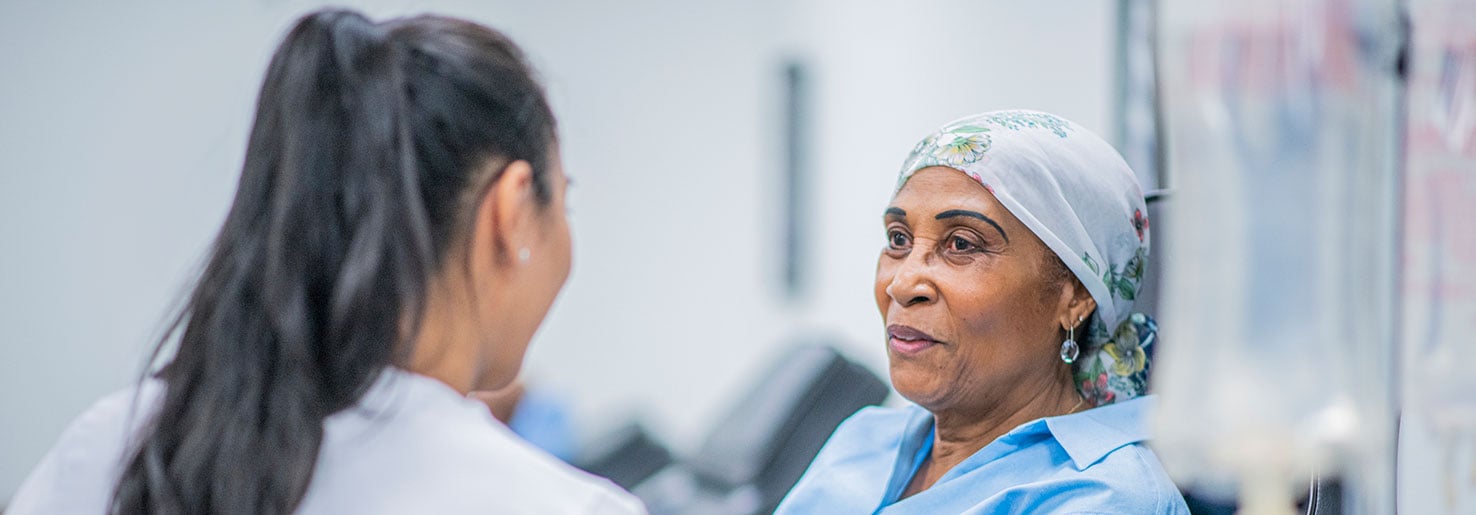
Vulvar Cancer Signs and Symptoms
Vulvar cancer is an uncommon malignancy that develops in the external female genitalia, which includes the clitoris, Bartholin’s glands and inner and outer lips that surround the vaginal opening (the labia minora and labia majora, respectively).
The early warning signs of vulvar cancer are often imperceptible, easily missed or misattributed to a less serious and more common inflammatory skin condition, such as eczema or psoriasis. Because this can delay treatment and negatively affect the outcome, it is important for every woman to become familiar with her body and what is normal for her, and to promptly discuss any unusual changes with a physician.
Early warning signs and symptoms of vulvar cancer
Usually, the first noticeable warning sign of vulvar cancer is a skin change on the surface of the labia majora or labia minora.
What does vulvar cancer look like?
Visible skin changes that could indicate vulvar cancer include:
- Patches of skin that look lighter or darker than the surrounding skin
- Areas of skin that are raised, roughened or thickened
- A lump that is pink, red or white
- Skin growths, such as wart-like bumps
- A mole on the vulva that changes in size, shape or color
- Open sores (ulcers) that do not heal
Other common signs and symptoms of vulvar cancer
In addition to vulvar skin changes, vulvar cancer may cause abnormal vaginal bleeding or discharge. Any bleeding that occurs between menstrual periods, after sexual intercourse or after menopause should be promptly discussed with a physician.
Vulvar cancer can also cause symptoms that can be felt.
What does vulvar cancer feel like?
Vulvar cancer may cause throbbing pain, persistent itching or tenderness in the vulva. It can also cause pain and burning sensations during urination.
Symptoms by vulvar cancer type
There are several types of precancerous vulvar changes and vulvar cancer, and each can produce its own unique set of symptoms.
Vulvar intraepithelial neoplasia
A precancerous skin condition, vulvar intraepithelial neoplasia (VIN) occurs when the skin cells covering the vulva undergo abnormal changes. In many cases, VIN does not produce noticeable symptoms, although some women experience persistent genital itching. Additionally, an area of vulvar skin may thicken and appear lighter or darker in color than the surrounding skin. If left untreated, VIN can gradually progress and develop into vulvar cancer.
Invasive squamous cell carcinoma of the vulva
Invasive vulvar cancer almost always produces symptoms, which can include:
- Skin changes, growths and sores
- Itching
- Pain and tenderness
- Burning sensations
- Abnormal vaginal bleeding or discharge
Additionally, verrucous carcinoma is a subtype of invasive squamous cell vulvar cancer that can produce cauliflower-like growths on the vulva that may resemble genital warts.
Vulvar melanoma
A form of skin cancer that can develop on the clitoris or labia minora, vulvar melanoma is the second most common type of vulvar cancer. In addition to typical vulvar cancer symptoms—skin changes, sores, lumps, itching, pain and vaginal bleeding—the signs of vulvar melanoma can include changes in a mole, which can be identified using the ABCDE guideline for recognizing melanoma:
- Asymmetry – The two halves of the mole are not identical.
- Border irregularity – The edges of the mole are uneven or ragged.
- Color variations – The mole has differing shades of black, brown or tan, or patches of blue, red or white.
- Diameter – The mole is wider than 1/4 inch in diameter.
- Evolving appearance – The mole has noticeably changed in size, shape or color.
Bartholin gland cancer
Accounting for only a small percentage of vulvar cancer cases, adenocarcinoma sometimes develops in the Bartholin’s glands or vulvar sweat glands. The most common sign is a distinct mass or lump near the vaginal opening. In most cases, this type of lump is caused by a noncancerous Bartholin gland cyst rather than Bartholin gland cancer.
Paget’s disease of the vulva
A type of skin cancer that develops in glandular cells, Paget’s disease of the vulva typically appears as a velvety area of pink or red skin with white patches. The skin may be itchy or sore. Other symptoms include moist, oozing ulcerations that bleed easily.
Frequently asked questions (FAQs) about vulvar cancer signs and symptoms
Moffitt Cancer Center prioritizes patient education, and we have included the following articles as reliable sources of information relating to FAQs about vulvar cancer symptoms:
- What are the warning signs of vulvar cancer?
- Do different types of vulvar cancer have different symptoms?
Benefit from world-class care at Moffitt Cancer Center
In most cases, vulvar cancer symptoms are not caused by cancer. Even so, a symptom can be a warning sign of another health issue, so it is important to promptly bring it to the attention of a physician who can determine the cause and suggest an appropriate treatment if necessary.
If you would like to discuss your vulvar cancer symptoms with a specialist at Moffitt, you can request an appointment by calling 1-888-663-3488 or submitting a new patient registration form online. The multispecialty team in our gynecological clinic offers comprehensive preventive, diagnostic, treatment and supportive care services in a single location, and we do not require referrals. Through our dedicated research program and robust portfolio of clinical trials, we are making great strides in enhancing the treatment options available for all current and future cancer patients.
